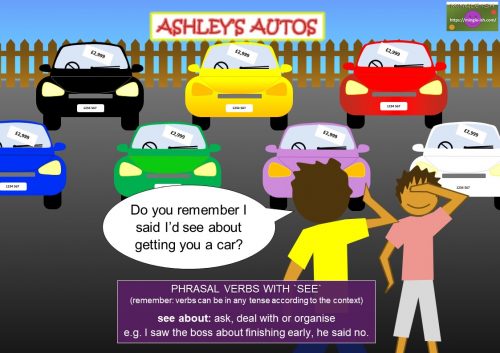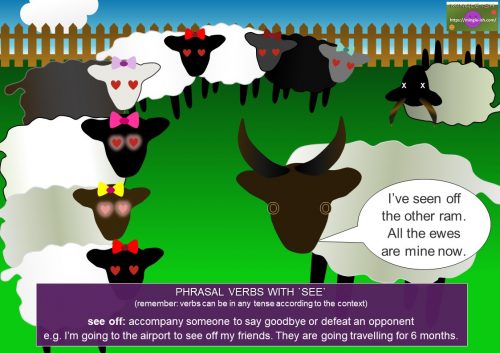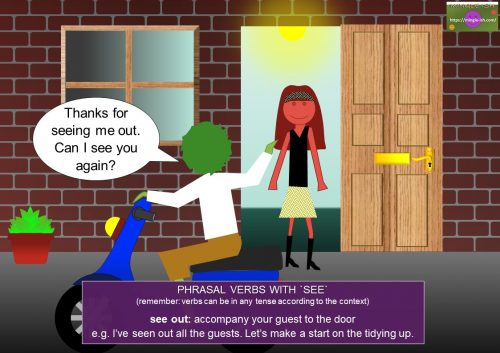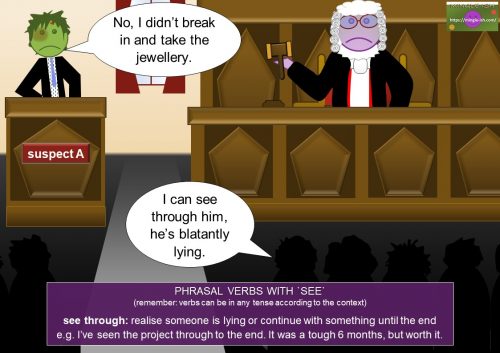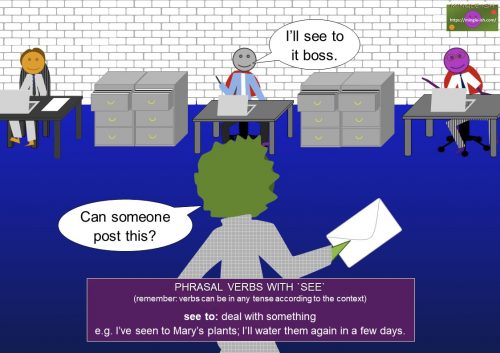There are a few phrasal verbs with see, but do you now what ‘see’ actually means? I’ll tell you…The word ‘see‘ can mean many different things. As a verb, the meaning is to understand or identify with the eyes.
For example:
- I can see your point. (understand)
- I saw Katy with Benji. (identify with the eyes)
See is an irregular verb. The past tense is saw and the past participle is seen.
FUN FACT 1 – See-through is also an adjective, it means translucent. We use this adjective to describe our clothes. For example:
- My t-shirt is so old it’s now see-through.
- Your skirt is see-through, I can see your knickers.
FUN FACT 2 – The past tense of see is saw. Saw is a homonym. Homonyms are words which are spelt and pronounced the same but have different meanings. A saw is also a noun (a tool for cutting wood and hard materials).
phrasal verbs with see
Phrasal verbs with ‘see’ include:
- see about
meaning – ask, deal with, or organise
example – I saw the boss about finishing early, he said no. - see off
meaning – accompany someone to say goodbye or defeat an opponent
example – I’m going to the airport to see off my friends. They are going travelling for 6 months. - see out
meaning – accompany your guest to the door
example – I’ve seen out all the guests. Let’s make a start on the tidying up. - see through
meaning – realise someone is lying or continue with something until the end
example – I’ve seen the project through to the end. It was a tough 6 months, but worth it. - see to
meaning – deal with something
example – I’ve seen to Mary’s plants; I’ll water them again in a few days.
picture examples
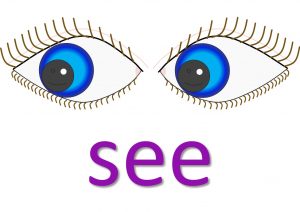
Let’s learn the meaning of the phrasal verbs that contain the verb ‘see’ in more detail and see some examples in use.
You can download a table of phrasal verbs with see below.
Did you know that many idiomatic expressions (idioms) in English also contain a lot of verbs? Just like phrasal verbs, idioms are a major part of the English language (slang in particular). They are used constantly amongst native English speakers and are handy to know and understand.
Now you’ve learnt all the phrasal verbs with see, how about learning the idioms with see too?
English courses online
If you’ve enjoyed this page, there are plenty more for you to look at. Click here to see the list of groups ready and waiting to be studied. Maybe you just like informal/slang English? Head to my useful tips and information section for loads more hints and tips to speak like a native.
If you really want to take your native speaking to the next level, how about taking a course? Here are some of the best ones:
